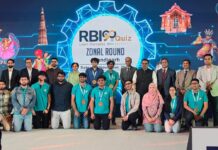From a drop to a drizzle and then to a gush: How the Government opened the faucet of prosperity by bringing water to Millions of Homes.
What is common between Lwangtlai in Mizoram, Kupwara in Jammu and Kashmir, Khachh in Gujarat and Nicobar Islands apart from them being the 4 extreme corner districts of the country? The common theme in all these places is that, now if you ask for water at people’s home, they will go to their newly installed taps and with palpable pride and a wide grin on their face quench your thirst. These border districts where a cartographer’s pen stops and a military man’s patrol starts have become symbolic to the success of the Jal Jeevan Mission(JJM) across the expanse of the nation, from innocuous looking hamlets on the steps of Himalayas to the plantain orchards of Kerala, JJM has become people’ reality, a reality that took 70 years to evolve yet less than 2 years to be skillfully executed. The journey ensued when from the ramparts of the Red Fort the Hon’ble Prime Minister first spoke of a nation with no home left behind without a functional tap connection, sowing the seed of Jal Jeevan Mission. In his “Man ki Baat” talks he elevated Pani (water) to the status of Parmeswar (God) and Paras (Elixir) and for the team of JJM, providing water became an act of bringing God into people’s homes, an act in the service of humanity and the divine. 2 years thence, enthused by untiring focus and sheer hard work, India has 8.12 Crore, i.e. 42.46% Households with a functional tap. To Put the numbers into perspective in the last 70 years, 3.23 Crore household had gotten tap connections, but in 2 years of its existence, JJM provided water to 4.92 Crore more households, it has achieved 100% Household tap Connections in 78 districts, 930 blocks, 56,696 Panchayats and 1,13, 005 villages. The numbers and its progress when plotted on a graph resembles a bull run, a graph that would amaze a mathematician and make an investor squeal with optimism.
Indians are a people who are tough to impress only by quoting numbers, and this skepticism can’t be held against them. In 74 summers of their independent existence, they have seen many policies transgress their way from plans to budget to papers to data but never into their lives. Thus numbers fail to impress, what doesn’t fail to impress is progress that they can see happening before their eyes, believable, verifiable and tangible. The Mission prides itself on being 100% accountable to the scrutiny of this nation. On JJM’s dash board, one can see real time updates of new daily connections being made in their area, they can go to each district, their own village, find the list of beneficiaries in each village, the latest water quality readings, the number of water sources constructed as well as members of water user committee and technicians in the village. The Mission’s sensor based water quality testing regime is nothing less than world class, one can see real-time quality of water being supplied across a host of parameters multiple times in a day on an open public platform. The water quality regime of the mission needs its own article which is for another day. Summarized in a line, Jal Jeevan Mission lays itself thread bare for people to inspect, to judge and then to opine whether real progress has happened or not.
One achievement not often discussed while quoting Jal Jeevan Mission’s phenomenal work is its contribution to woman empowerment. First, it relieves the women folk of the need to travel long distances to fetch water, but equally importantly catalyses change in the hitherto established gender roles in employment, skills and society by making women leaders at community levels. This women leaders find themselves on village and water sanitation committees where 50% has been reserved for them, they don the pilot’s hat and get involved in every minute aspect of planning, implementation, management and operation of in-village drinking water supply scheme. More over 5 women of every village have been confided with the responsibility of water quality surveillance and many women are being upskilled as plumbers, mechanics, pump operators etc. In these 2 years, it has been heartening to see women proactively stepping up to these new responsibilities. The impact that these pioneering women will have on the malleable minds of young girls is truly immense. In their shadows, the young girls will grow and usurp other established gendered roles in the future.
There is a peculiar study called memetics which says that some ideas act like living units, they reproduce, sometimes simply replicate, sometimes evolve and before long change the very world that they inhabit. The idea of connecting every household to a functional tap that was beamed to the world by the Honourable Prime Minister has transformed itself into a living unit, with every tap it is being replicated, with every water sanitation committee, this idea is fusing itself into the concept of women empowerment and evolving into something new. By 2024, when every home will have a water tap, it will be exciting to know how this idea called Jal Jeevan Mission would have transformed not only water sector but other associated sectors, till then we will keep on connecting homes to taps, creating new women leaders and bringing new smiles.
















